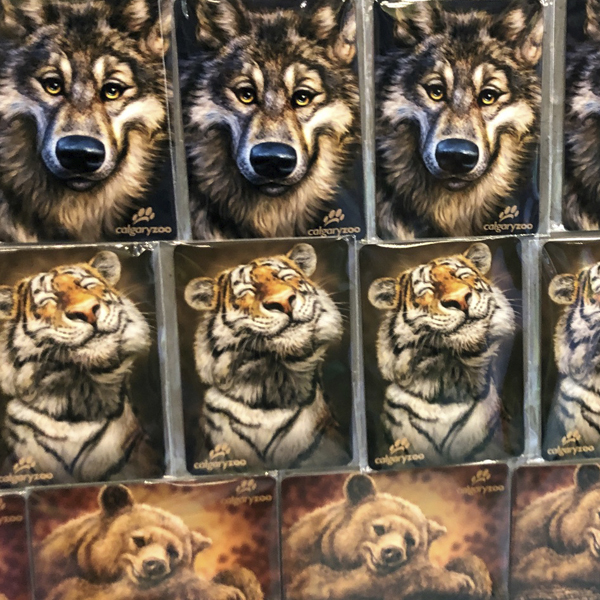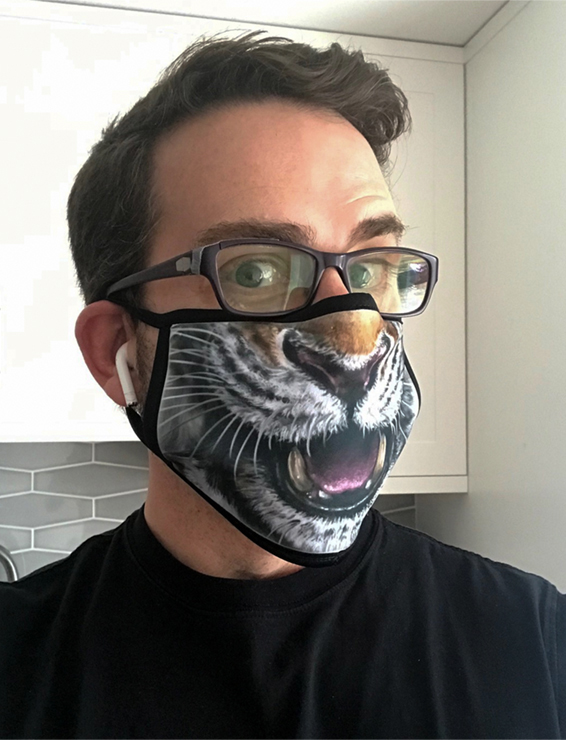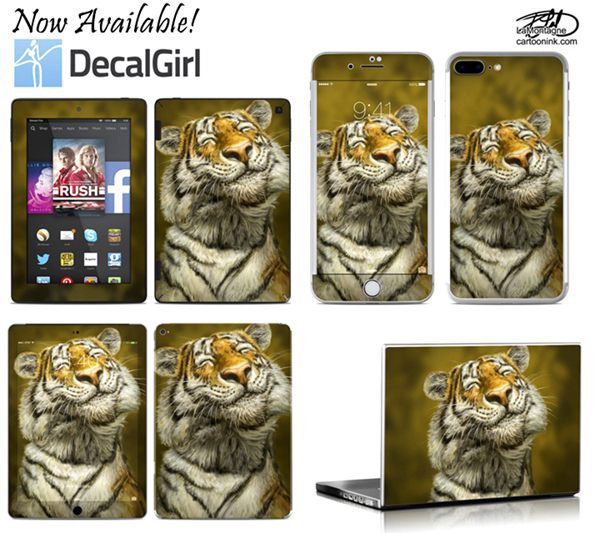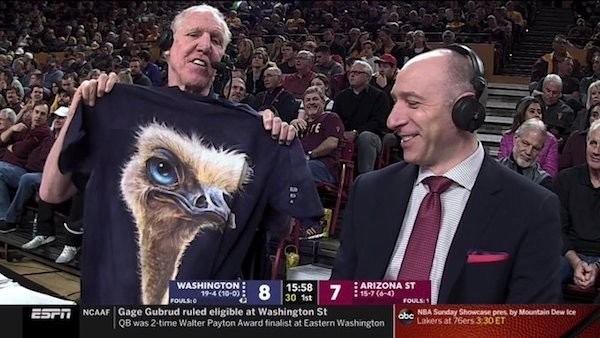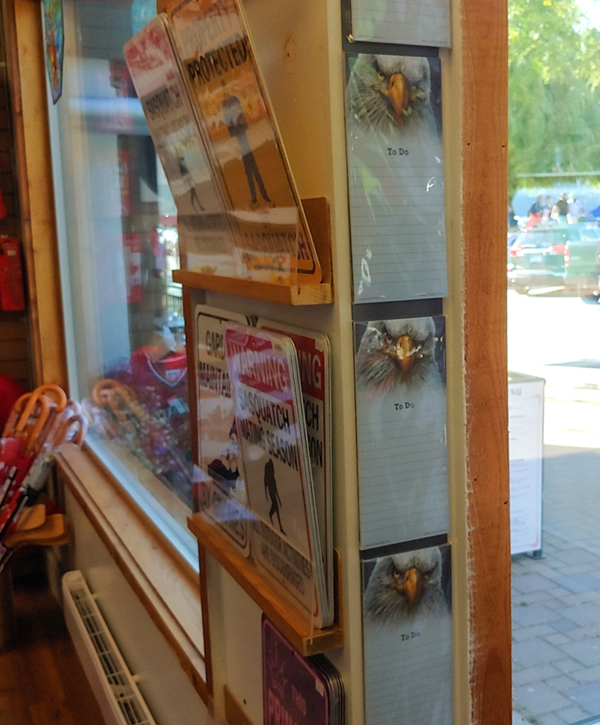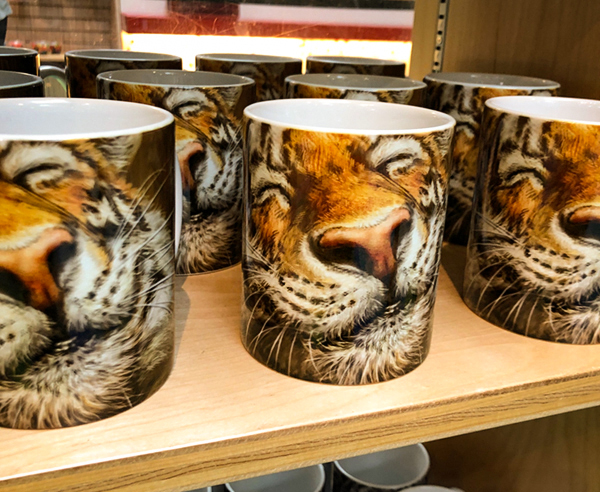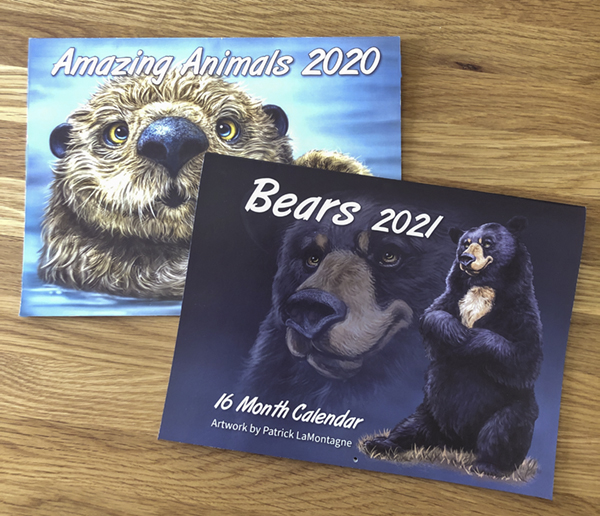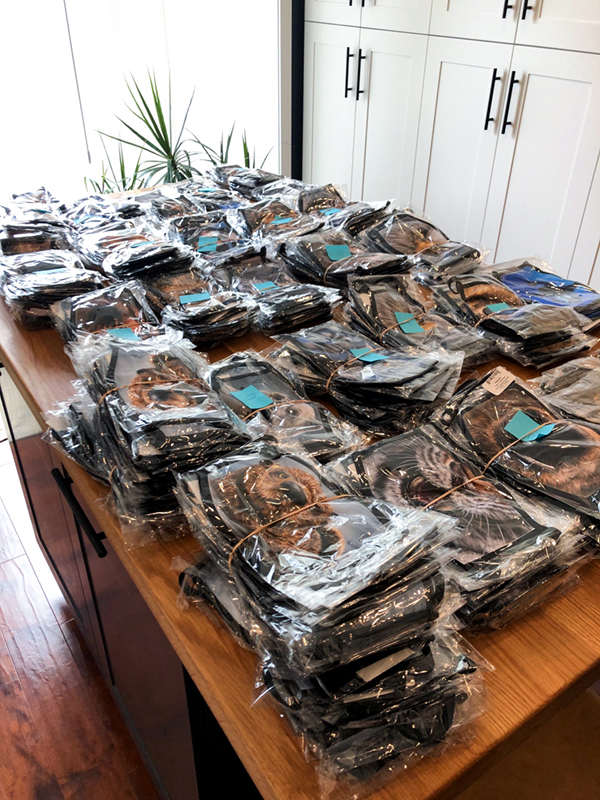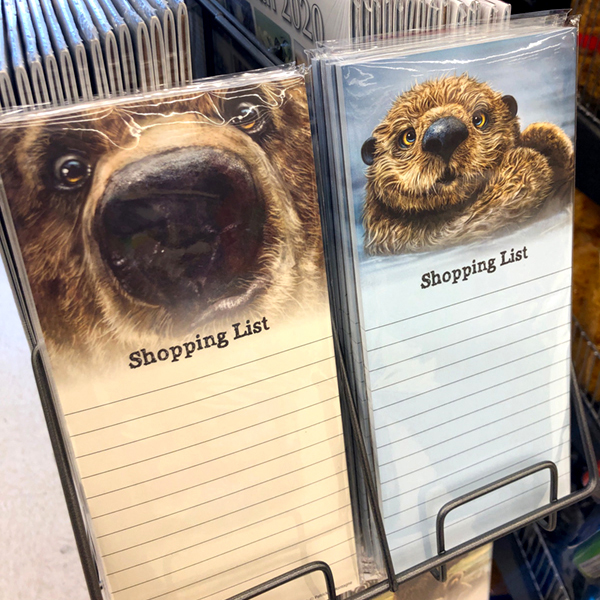
If I were to give one piece of advice to aspiring professional artists, it would be to diversify. Find as many income streams as possible so that when one inevitably falters or fails, it doesn’t mean the end of your business.
At the peak of my editorial cartoon career, I had more than four dozen daily and weekly Canadian newspapers regularly running my cartoons in almost every province and territory. While it continues to be a valuable part of my business, today, it’s no longer the full-time income it was. But I’ve had time to pivot because I lost one or two papers at a time, with several clients instead of just one.
Thankfully, I developed another side to my business with my whimsical wildlife, which continues to grow. That revenue also comes from several different sources.
I wholesale my prints and vinyl stickers to places like The Calgary and Toronto Zoos, Discovery Wildlife Park, and Stonewaters in Canmore.
My online store is not a significant source of revenue, but my art sells well in person at the Calgary Expo and Banff Christmas Markets.
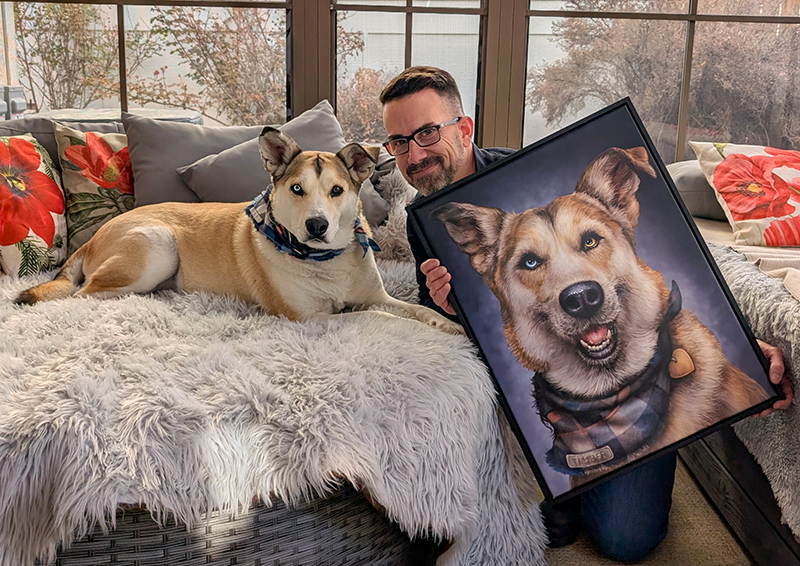 Because of the work involved and the fact that I need to leave room for painting more wildlife, I only accept a few pet portrait commissions a year, but that’s also a reliable source of income.
Because of the work involved and the fact that I need to leave room for painting more wildlife, I only accept a few pet portrait commissions a year, but that’s also a reliable source of income.
Finally, I’m fortunate that my animals have commercial appeal, and my art style is attractive to licensing clients. Companies put my art on their products and pay a royalty percentage on sales.
Harlequin Nature Graphics in Victoria has sold some of my images on T-shirts for many years. Pacific Music & Art adds my art to cards, water bottles, coasters, magnets, trivets and more. If you visit the Calgary Zoo gift shops, you’ll see my prints and stickers on shelves next to my art on Pacific products.
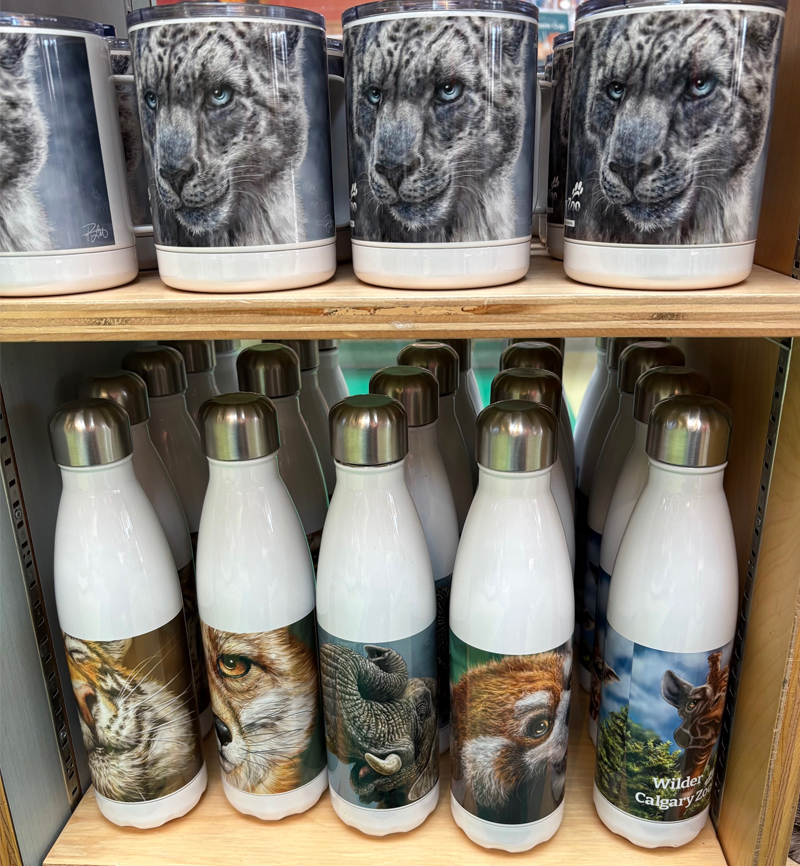 Licensing allows me to reach a much bigger audience than I could handle myself. I already spend more time promoting and selling my animal art than I do creating it. If I tried to do the work my licensing clients do, I could never paint anything.
Licensing allows me to reach a much bigger audience than I could handle myself. I already spend more time promoting and selling my animal art than I do creating it. If I tried to do the work my licensing clients do, I could never paint anything.
These businesses aren’t only in Canada. A company in Cyprus licensed my artwork for the Happy Color app, and clients in the UK and the US have licensed my work for several different products.
The current fabricated tension between Canada and the US threatens to devastate the economies of both countries. We all know why it’s happening and who is solely responsible. Whether you agree or disagree politically, you can’t argue against the evidence that this is devastating for the markets, cross-border trade and the formerly amicable and mutually beneficial business relationship between the two countries.
In acts of defiance against divisive tariffs and 51st state rhetoric, many Canadians are avoiding US products. Though it has long been our number one tourism destination, travel to the US for business and tourism has plummeted to the point where airlines have eliminated some routes to select American cities.
Every Canadian individual or company who works with or for US businesses is now in a difficult position. How do you promote these services and products while understanding and supporting the fact that Canadian customers aren’t buying from American companies right now?
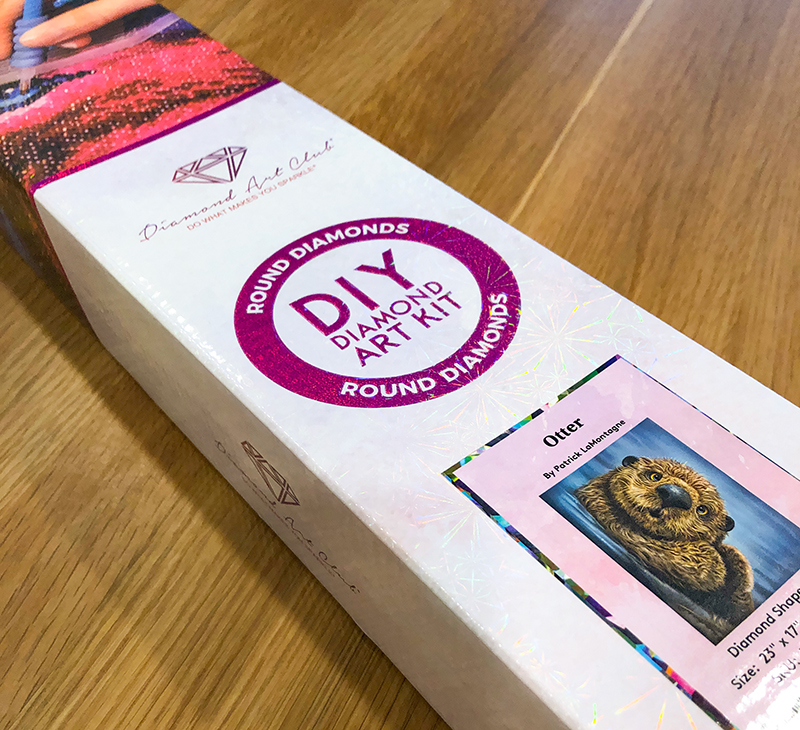 One of my favourite US licenses is Diamond Art Club. Before the pandemic, I had never heard of this hobby, but it has a massive and devoted following. The sample product they sent featuring my Otter painting impressed the hell out of me. I didn’t have time to assemble it, so I gifted it to one of my American subscribers.
One of my favourite US licenses is Diamond Art Club. Before the pandemic, I had never heard of this hobby, but it has a massive and devoted following. The sample product they sent featuring my Otter painting impressed the hell out of me. I didn’t have time to assemble it, so I gifted it to one of my American subscribers.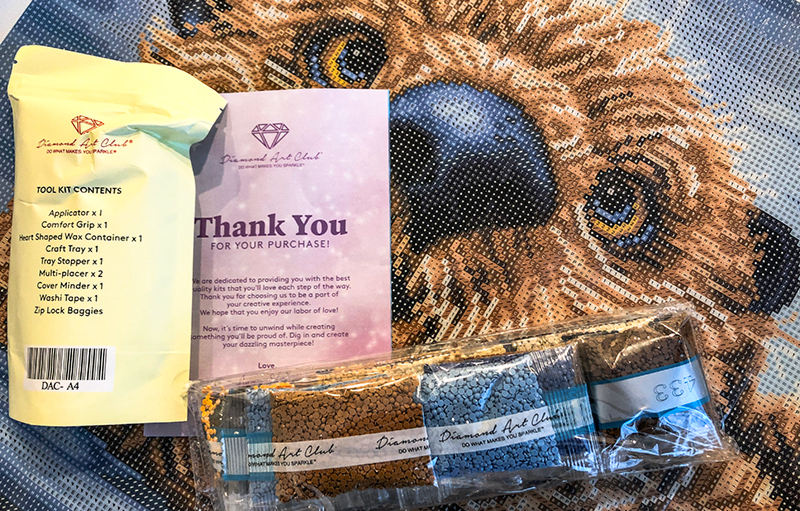
Diamond Art Club has been friendly and professional, my images sell well, and they always pay me on time. I love working with this company. In addition to the six designs they’ve got on offer, I’ve recently found out two more paintings are in the design and production pipeline.
Many years ago, I was licensed with The Mountain, a T-shirt company out of Vermont. I especially liked the connection as my French last name, LaMontagne, directly translates to The Mountain.
The owner, a talented artist in his own right, was great to work with. The Mountain sold my designs on shirts for several years. The relationship ended when the owner sold the company, but licensing contracts often only endure for a few years anyway.
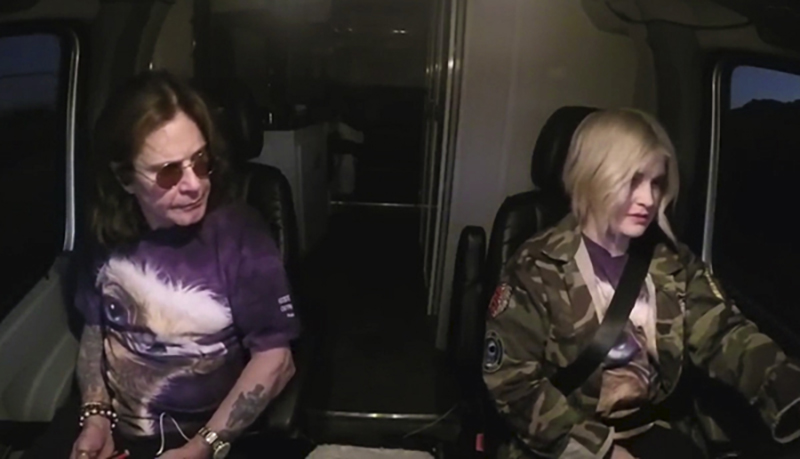 While not one of my bestselling prints, my Ostrich painting was very popular as a T-shirt, and it showed up in the strangest places. I saw Jack Black wear it a couple of times. Ozzy and Kelly Osbourne wore it on their show, as did a character in a Netflix series. Subscribers spotted the shirts and sent me screenshots from hockey and basketball games.
While not one of my bestselling prints, my Ostrich painting was very popular as a T-shirt, and it showed up in the strangest places. I saw Jack Black wear it a couple of times. Ozzy and Kelly Osbourne wore it on their show, as did a character in a Netflix series. Subscribers spotted the shirts and sent me screenshots from hockey and basketball games.
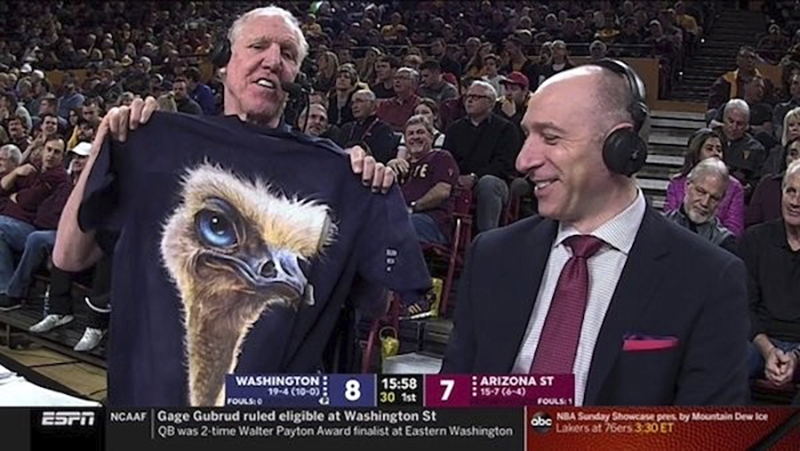 A little over a year ago, many years since our previous contract, The Mountain contacted me about licensing the Ostrich again. An ostrich ranch in Arizona sold many of those shirts, and I suspect they might have been the reason for the request.
A little over a year ago, many years since our previous contract, The Mountain contacted me about licensing the Ostrich again. An ostrich ranch in Arizona sold many of those shirts, and I suspect they might have been the reason for the request.
The Mountain was recently sold to Liquid Blue and was again under new ownership. I took the opportunity to suggest that they consider some new designs, and they were receptive.
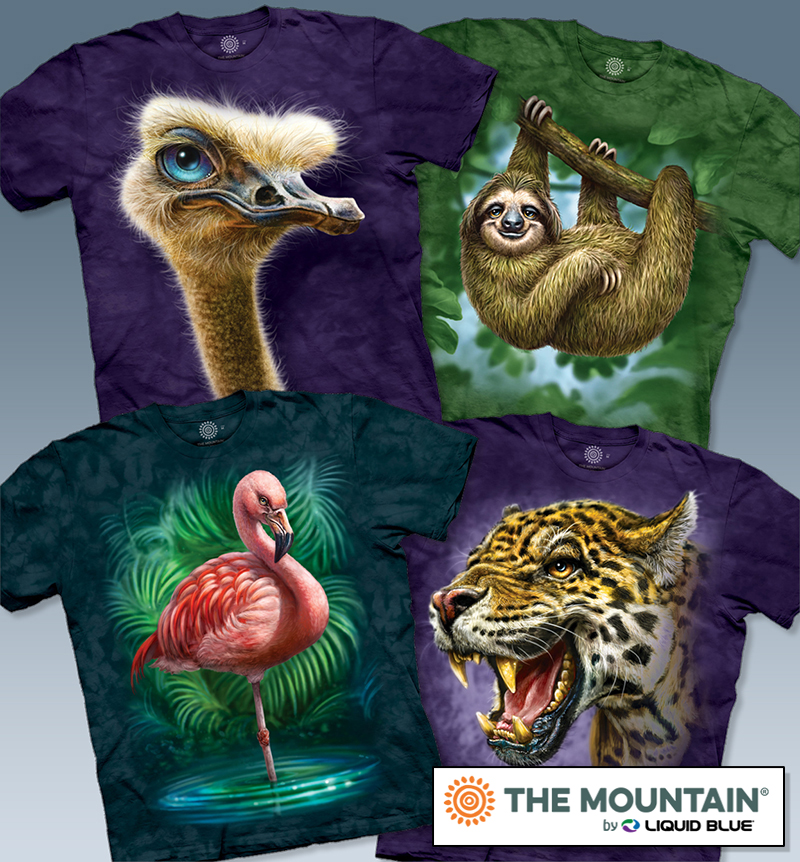 Licensing agreements can be exclusive, but many aren’t. Even then, a company that produces the same product won’t want to sell the same designs. In our online world, it doesn’t matter if they’re not in the same physical area because anybody can buy anything from anywhere.
Licensing agreements can be exclusive, but many aren’t. Even then, a company that produces the same product won’t want to sell the same designs. In our online world, it doesn’t matter if they’re not in the same physical area because anybody can buy anything from anywhere.
So, the designs I submitted to The Mountain were different from those currently sold by Harlequin Nature Graphics in Canada.
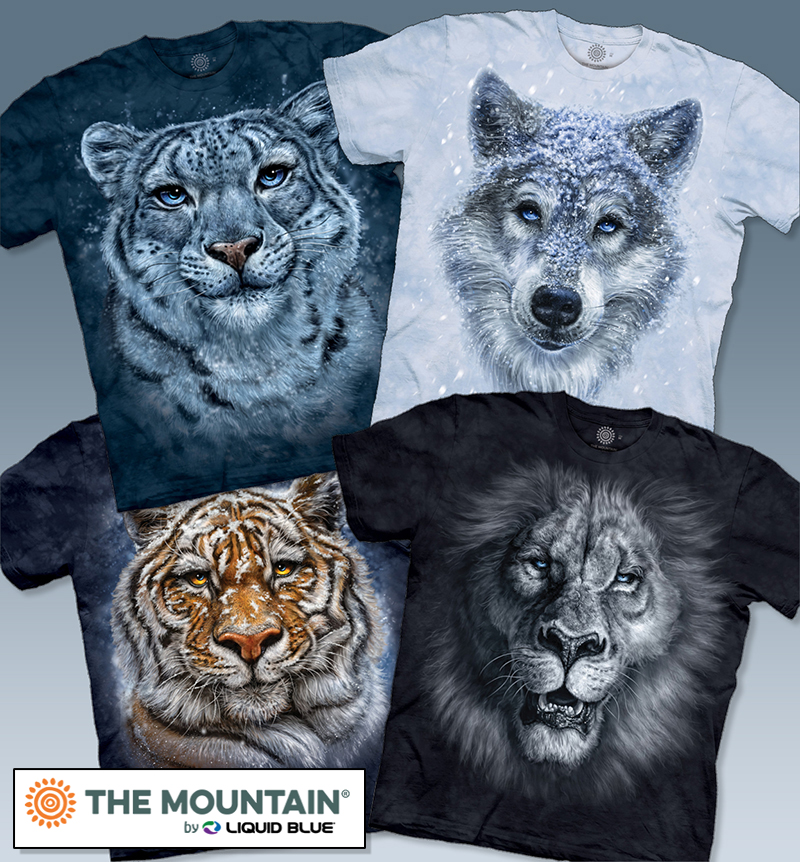 With licensing, contracts to negotiate and sign, and promotion schedules, product launches can take time. While a company plans how and when new designs are made available, it’s understood, if not explicitly laid out in the contract, that the artist doesn’t talk about it.
With licensing, contracts to negotiate and sign, and promotion schedules, product launches can take time. While a company plans how and when new designs are made available, it’s understood, if not explicitly laid out in the contract, that the artist doesn’t talk about it.
I have known these 8 new shirts have been coming for the past year. Their designer(s) did a great job adapting my images to their signature shirts, and they look even better than their previous designs.
But as bad luck would have it, these new T-shirts have launched in the middle of a trade war, where Canadian companies and consumers are actively avoiding US products, and the Canadian dollar has dropped. A year ago, I would have been excited to tell you about these designs and introduce them to my Canadian wholesale clients. But today, promoting these products to Canadians is rather pointless.
We know the situation, so I won’t go off on a political rant. We know how we got here. The fear is that there is too much damage done, and we won’t be able to get back, especially since none of this is close to finished. And just like during the pandemic, what the world looks like on the other side is anybody’s guess.
In the meantime, I will continue to adapt and diversify.

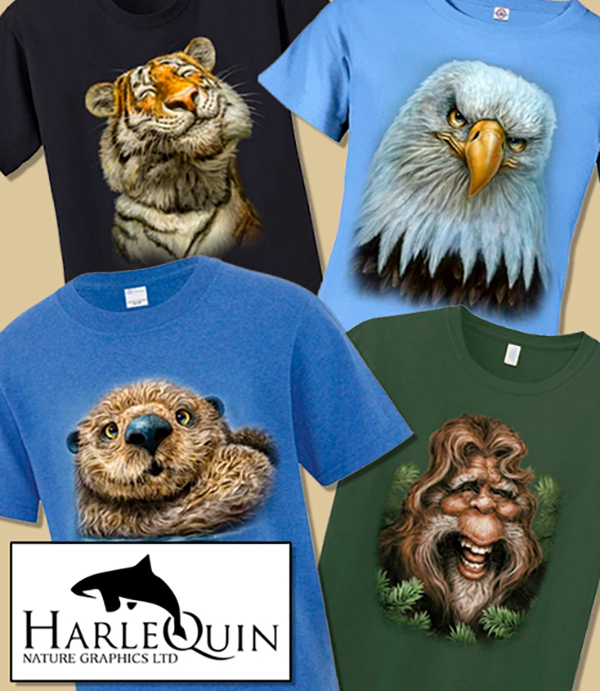

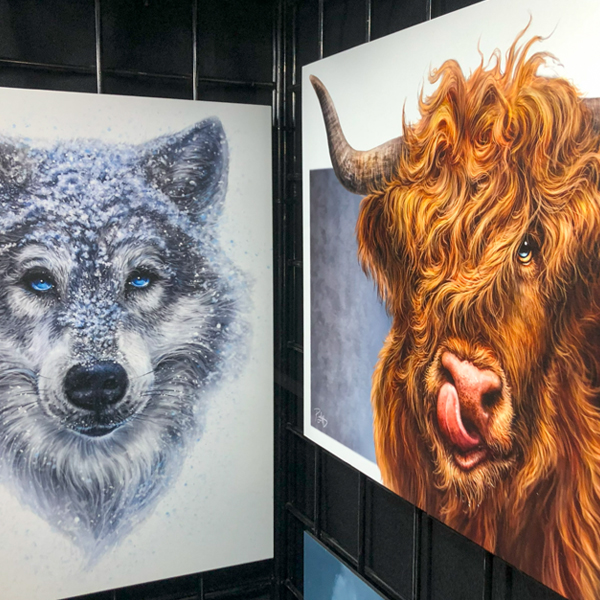
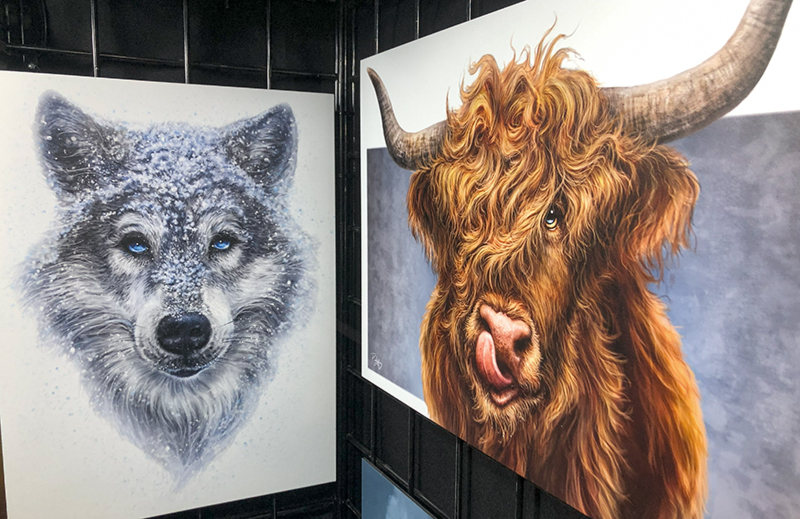 The weather outside was frightful last Friday and Saturday, but the Bow Valley avoided the worst of the big storm that rolled through Alberta on the weekend. Still, I have lived in this valley long enough to know that the 25 km stretch of highway between Canmore and Banff can quickly become treacherous.
The weather outside was frightful last Friday and Saturday, but the Bow Valley avoided the worst of the big storm that rolled through Alberta on the weekend. Still, I have lived in this valley long enough to know that the 25 km stretch of highway between Canmore and Banff can quickly become treacherous.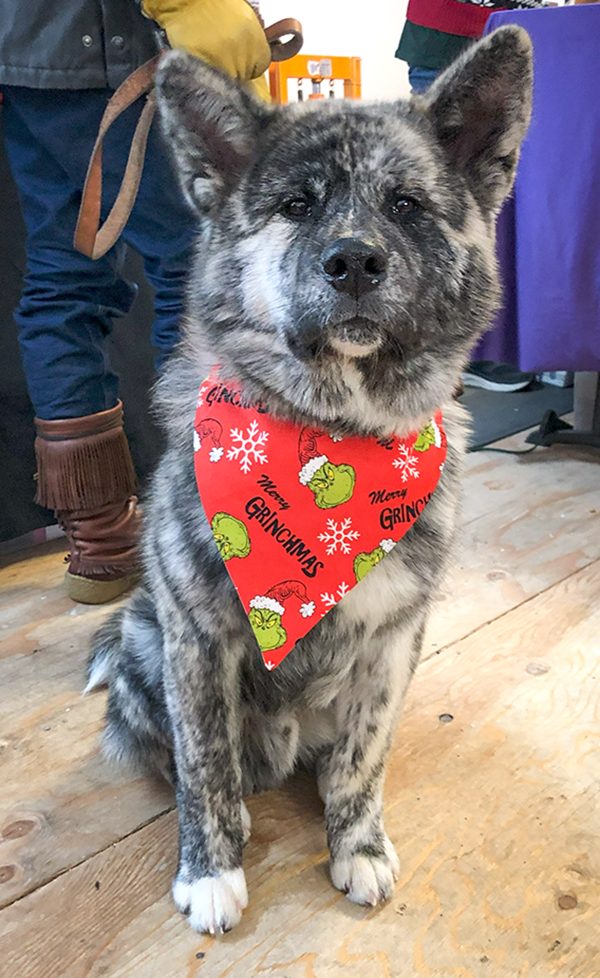 One of the dogs I get to see all month long is Tojo, who belongs to one of the staff. He’s a friendly Akita puppy with a stunning brindle fur pattern resembling urban camouflage. He’s got a wonderfully sweet temperament and loves the outdoor cold. Though provided with a comfortable bed and a safe, warm space outside, you can often find him happily sleeping on a pile of snow.
One of the dogs I get to see all month long is Tojo, who belongs to one of the staff. He’s a friendly Akita puppy with a stunning brindle fur pattern resembling urban camouflage. He’s got a wonderfully sweet temperament and loves the outdoor cold. Though provided with a comfortable bed and a safe, warm space outside, you can often find him happily sleeping on a pile of snow.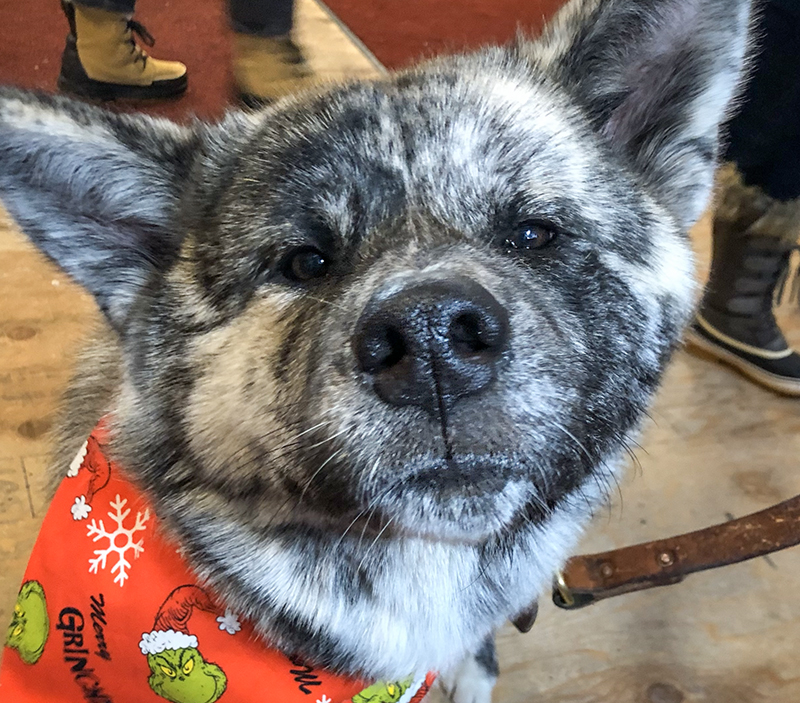 When he’s brought inside to warm up or for a wander, he visits the different booths and enjoys the pets and scratches we’re all happy to give. His face reminds me of a bear’s, which makes me want to paint him.
When he’s brought inside to warm up or for a wander, he visits the different booths and enjoys the pets and scratches we’re all happy to give. His face reminds me of a bear’s, which makes me want to paint him.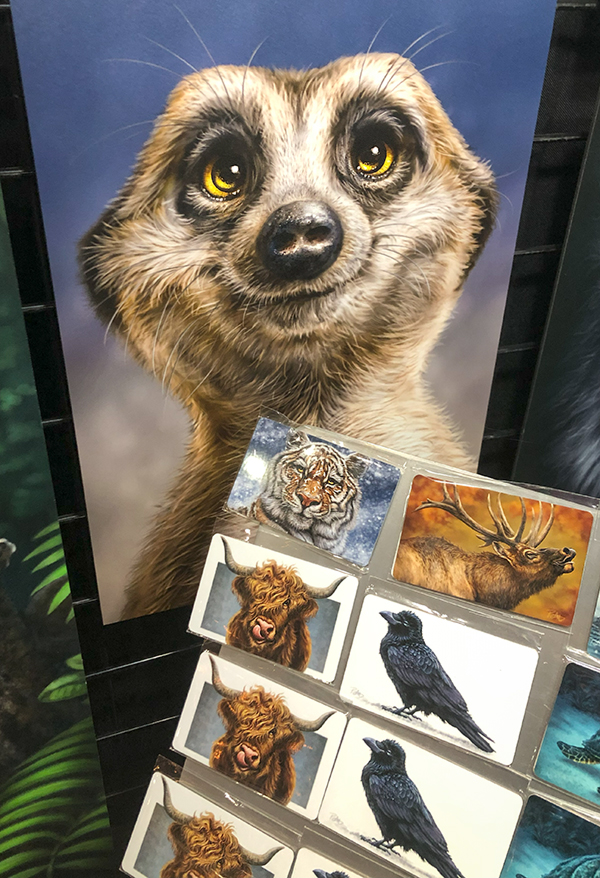 Seriously, what is it with this painting? I don’t understand it, but as I said to Mike at Pacific, I won’t look a gift cow in the mouth.
Seriously, what is it with this painting? I don’t understand it, but as I said to Mike at Pacific, I won’t look a gift cow in the mouth.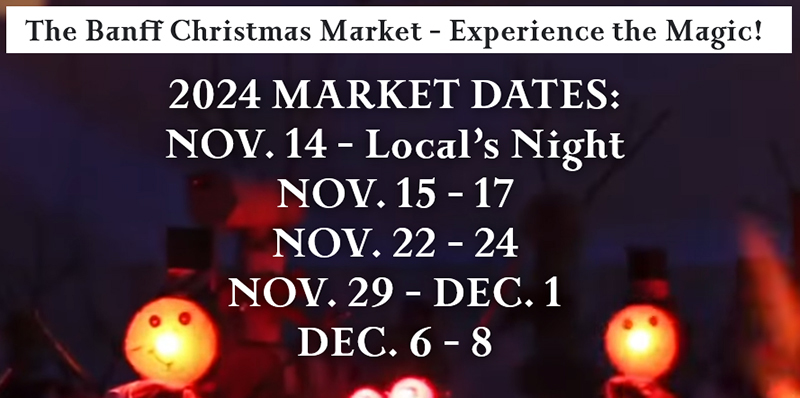
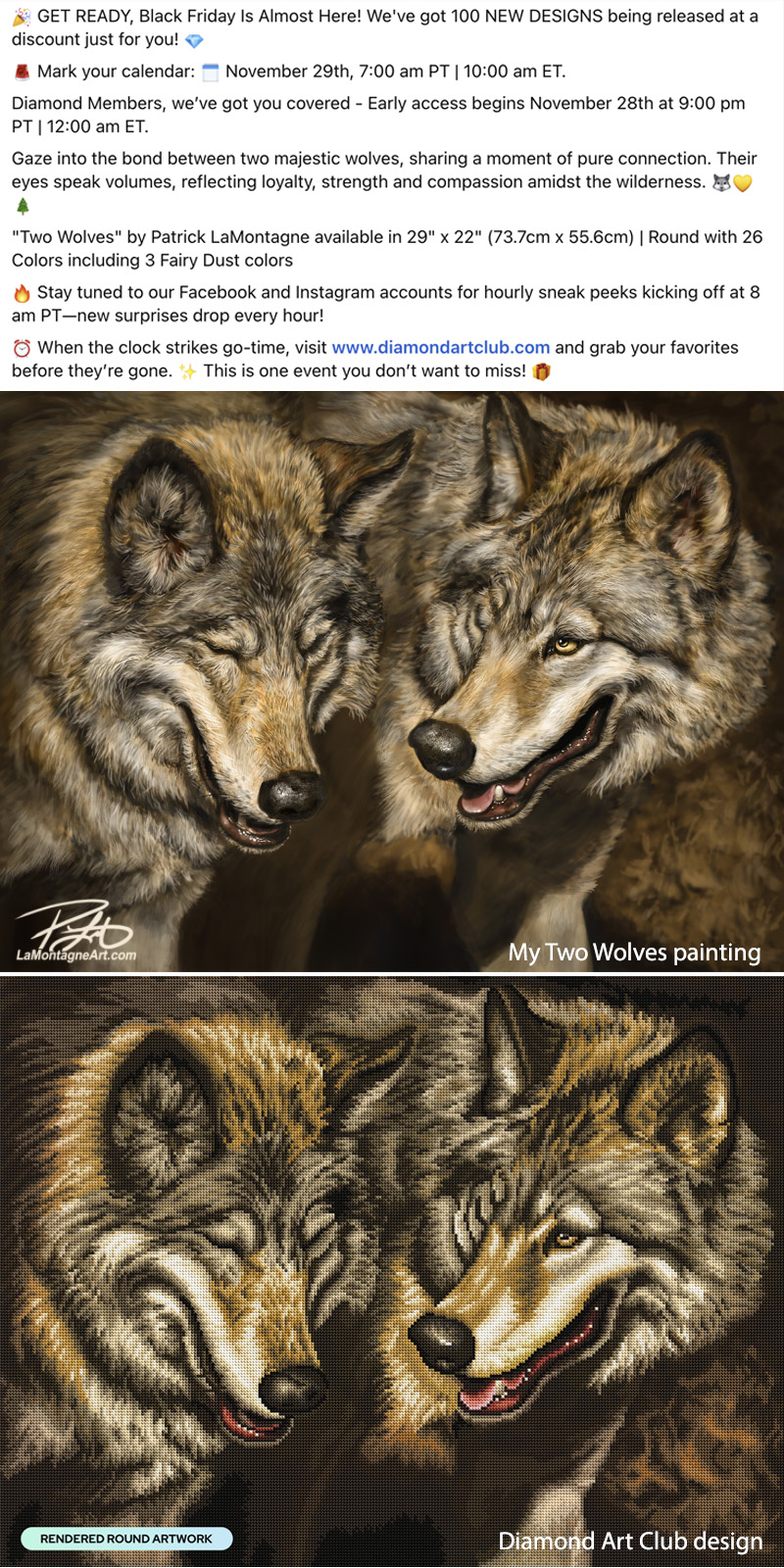

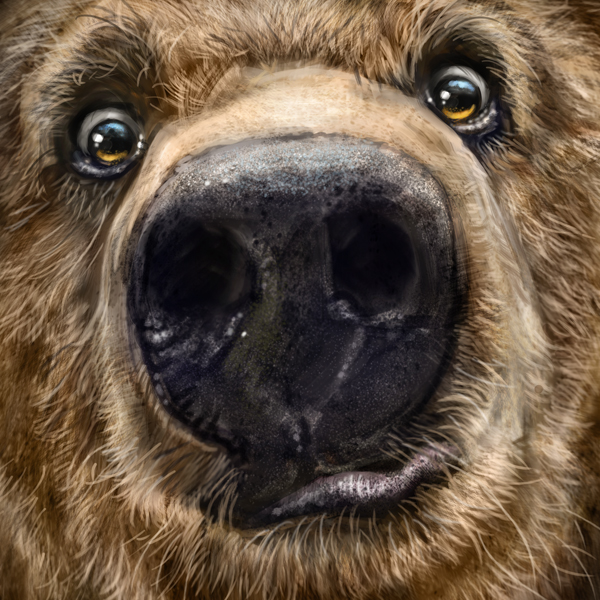
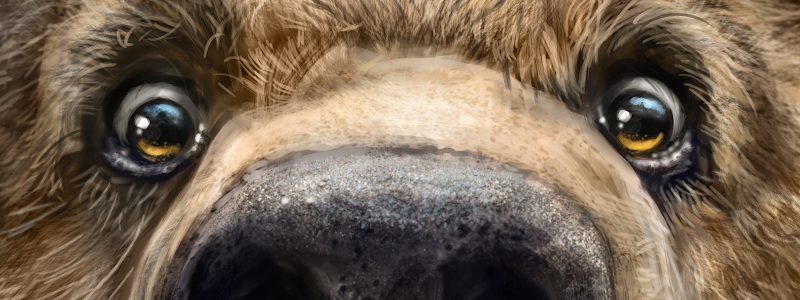 With a website and
With a website and 
 My buddy Darrel and I spent five days last week at the cabin we rent in the foothills of central Alberta. Even though our first visit there was in January of 2018, we don’t often go during the winter months.
My buddy Darrel and I spent five days last week at the cabin we rent in the foothills of central Alberta. Even though our first visit there was in January of 2018, we don’t often go during the winter months. Back to work, I’m already preparing for the
Back to work, I’m already preparing for the 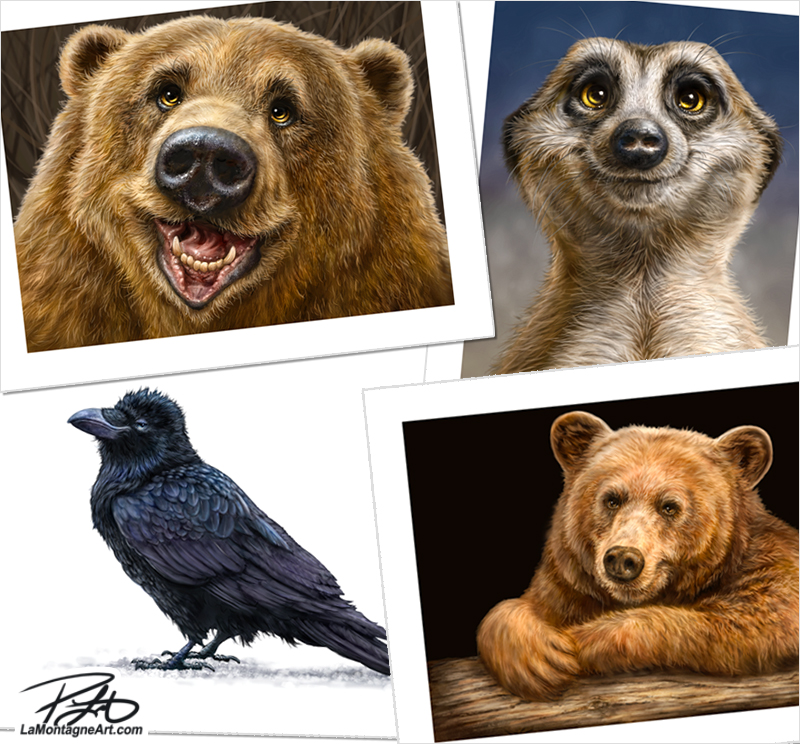

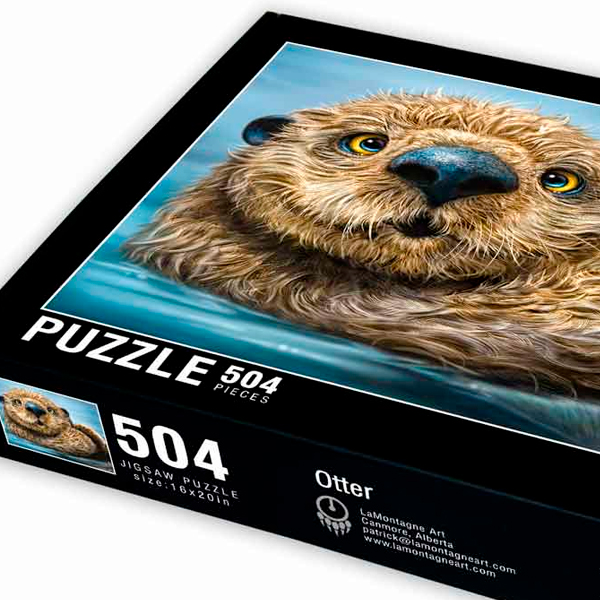
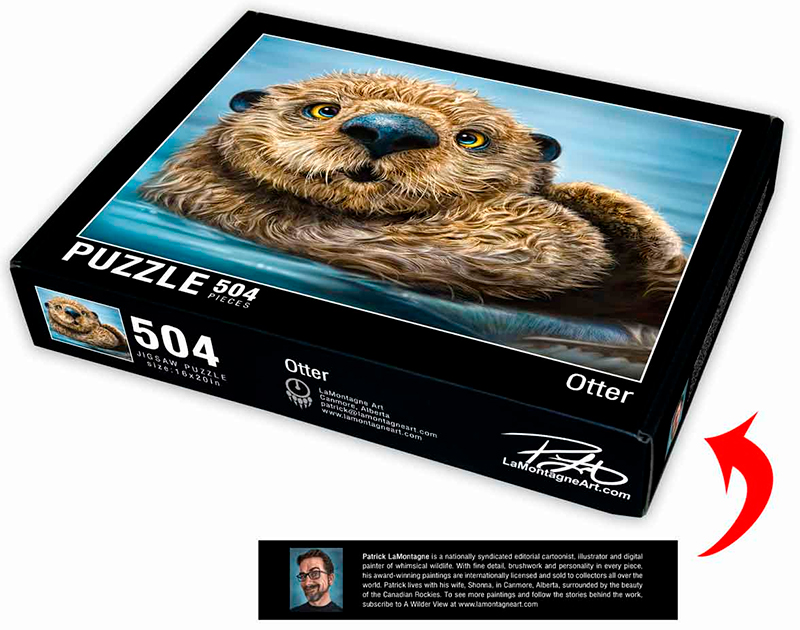 Just yesterday, I received the 3D preview renderings, the Otter you see here. As it’s been challenging for anybody who ships anything lately, I’ll be double-checking with Canada Post today to get the best shipping price I can, and preparing the preorder to launch on Monday, February 13th.
Just yesterday, I received the 3D preview renderings, the Otter you see here. As it’s been challenging for anybody who ships anything lately, I’ll be double-checking with Canada Post today to get the best shipping price I can, and preparing the preorder to launch on Monday, February 13th. This preorder will be exclusive to
This preorder will be exclusive to 


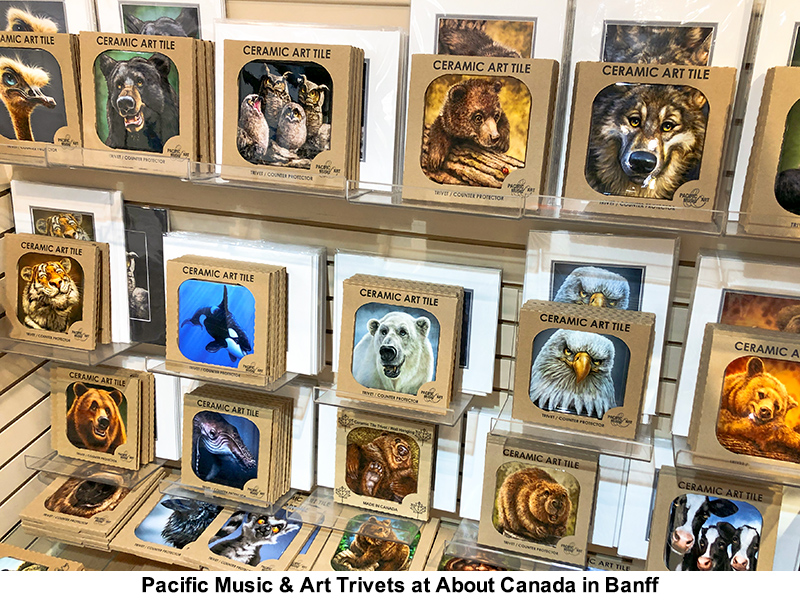
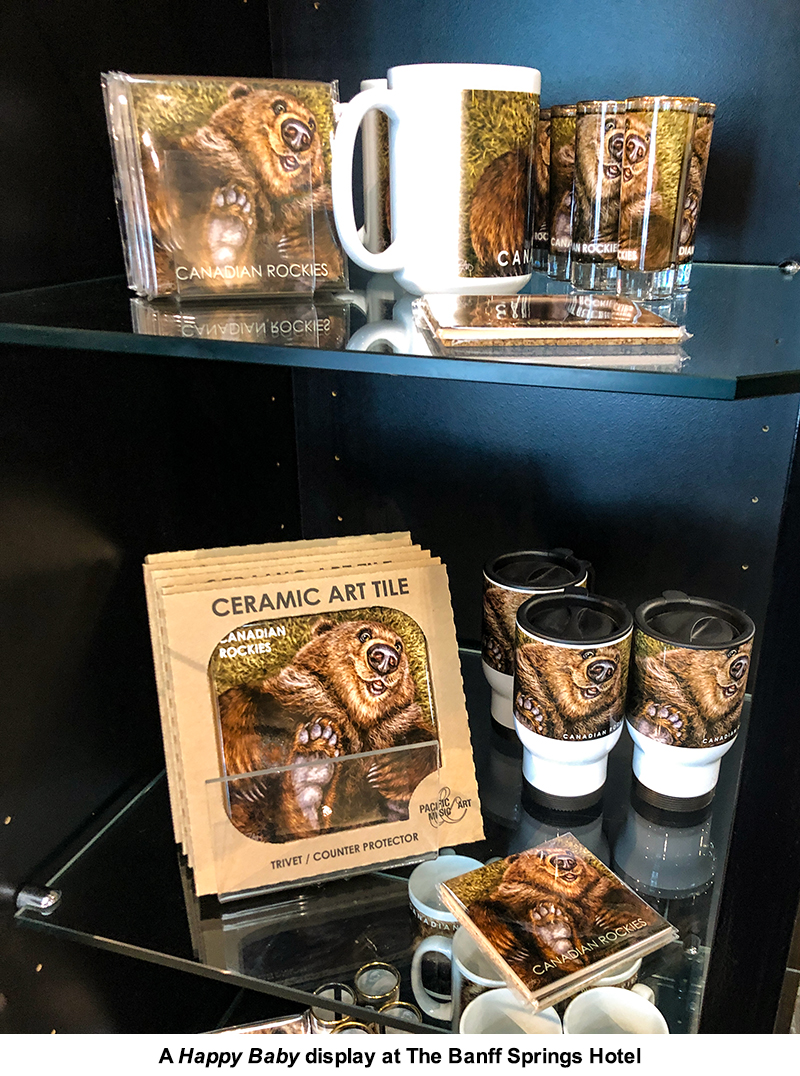
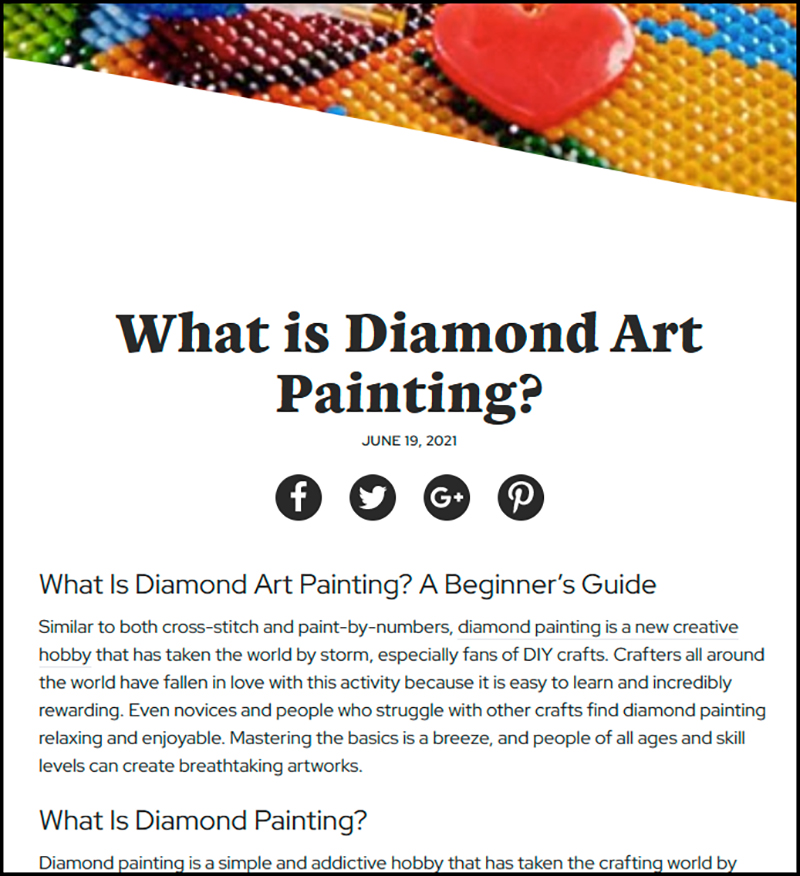

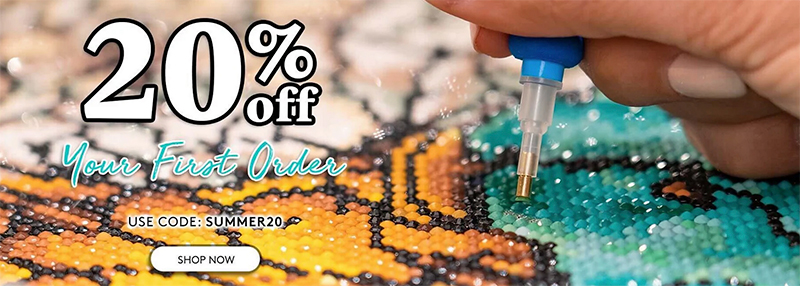


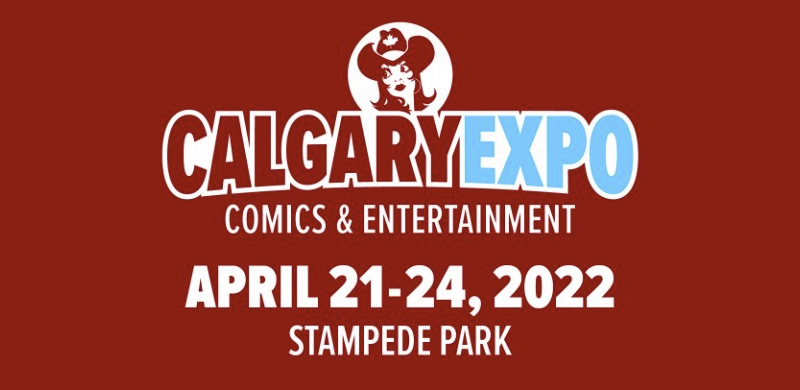
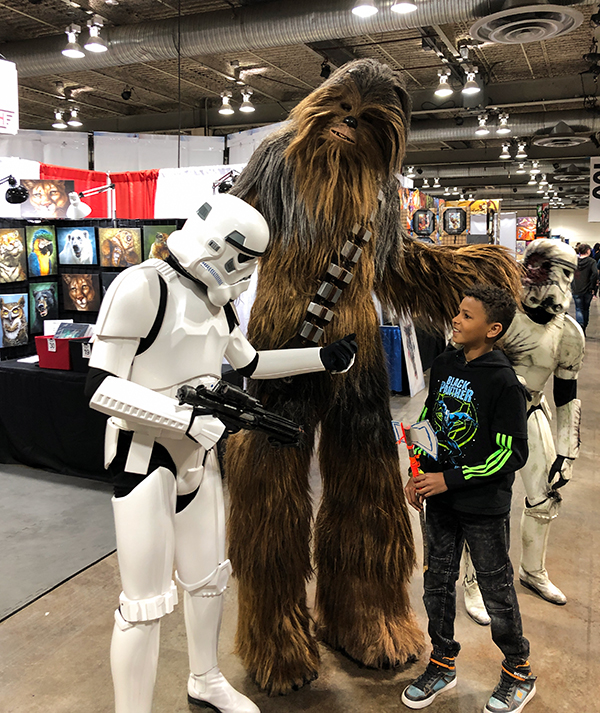 Truly an all-ages, family-friendly event, it has consistently been one of the most positive experiences I’ve had each year. The people-watching alone is worth attending, and the whole event has a circus feel.
Truly an all-ages, family-friendly event, it has consistently been one of the most positive experiences I’ve had each year. The people-watching alone is worth attending, and the whole event has a circus feel.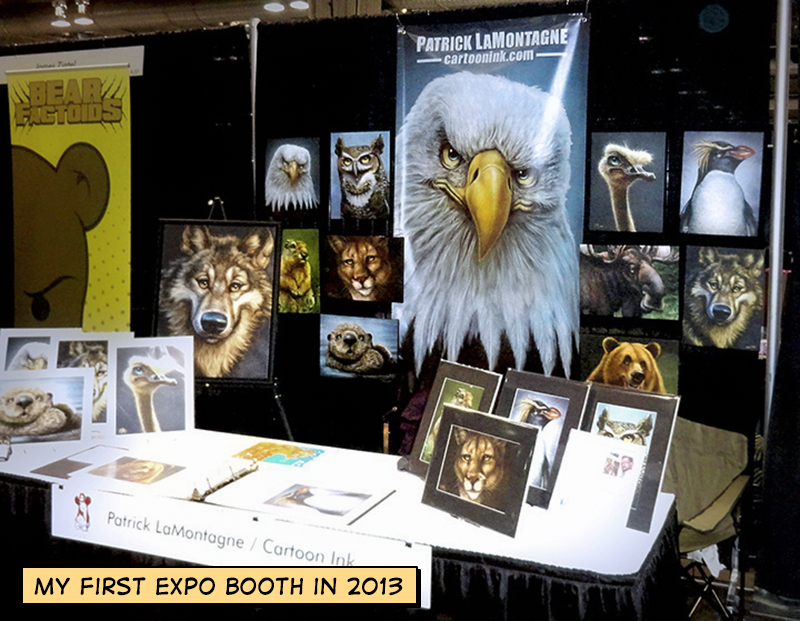
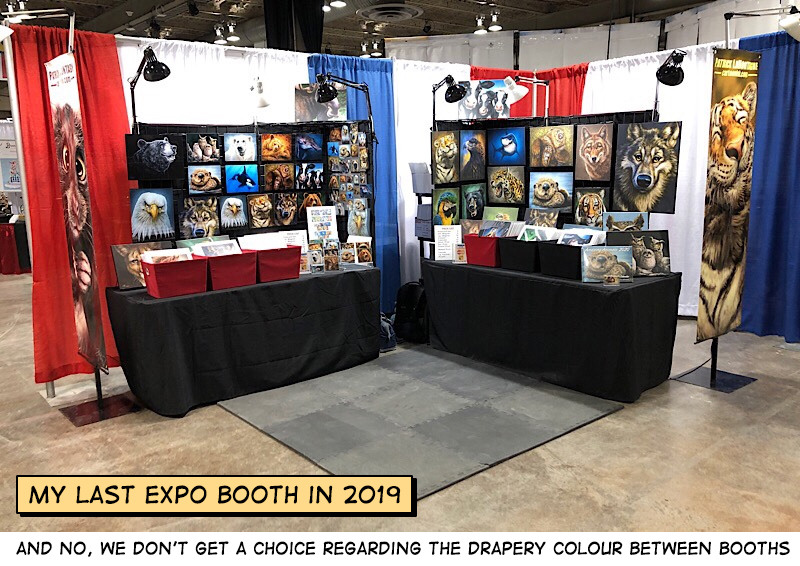 Neighbouring vendors form temporary communities at these shows. We watch each other’s booths for bathroom breaks, might do a coffee run if one of us is going, and we talk during set-up and slow periods. I hear a common question: “How did you do today?”
Neighbouring vendors form temporary communities at these shows. We watch each other’s booths for bathroom breaks, might do a coffee run if one of us is going, and we talk during set-up and slow periods. I hear a common question: “How did you do today?” That explains the hard costs, but what about my time?
That explains the hard costs, but what about my time?
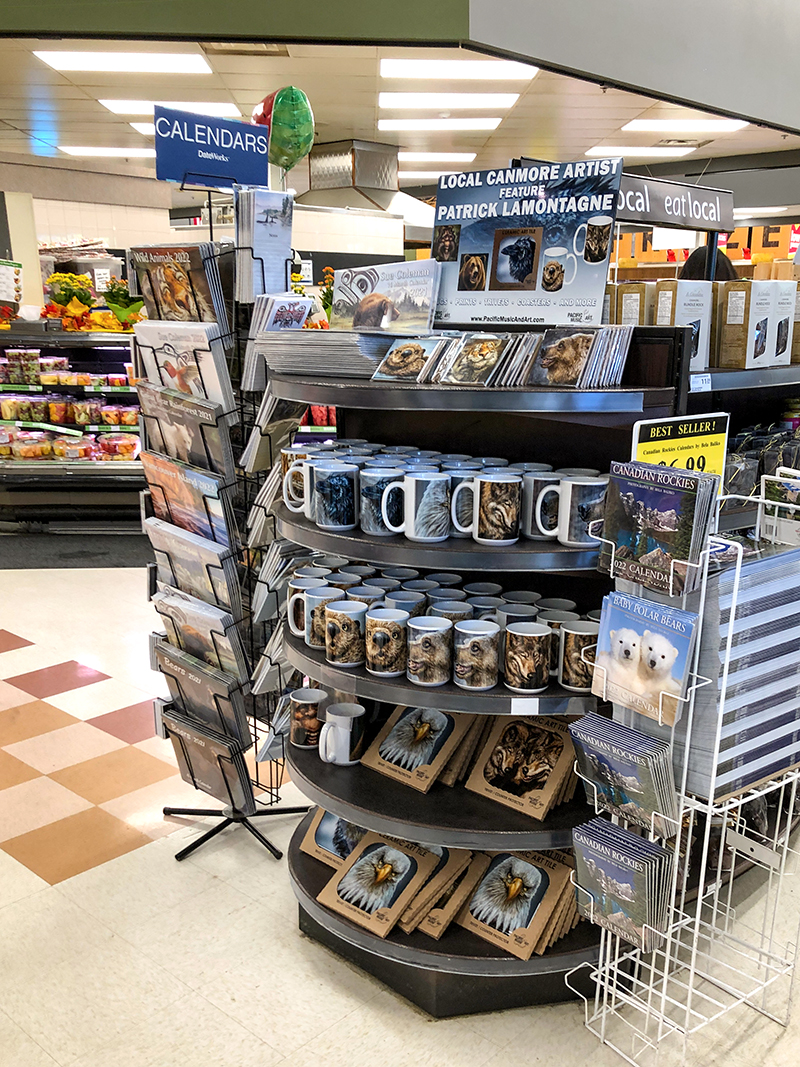
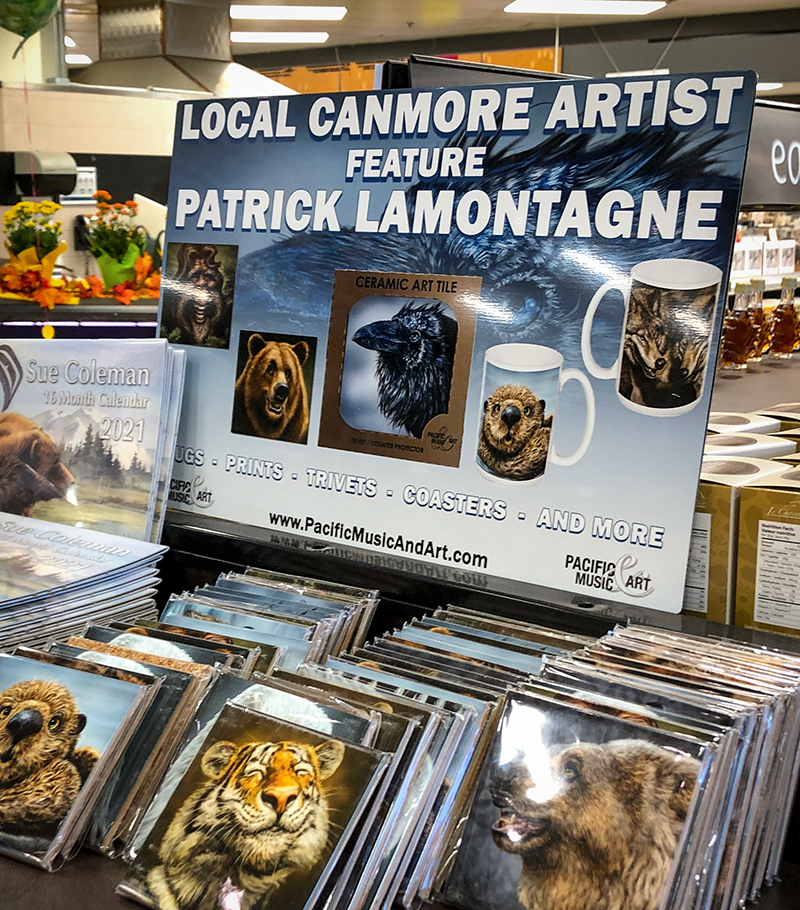


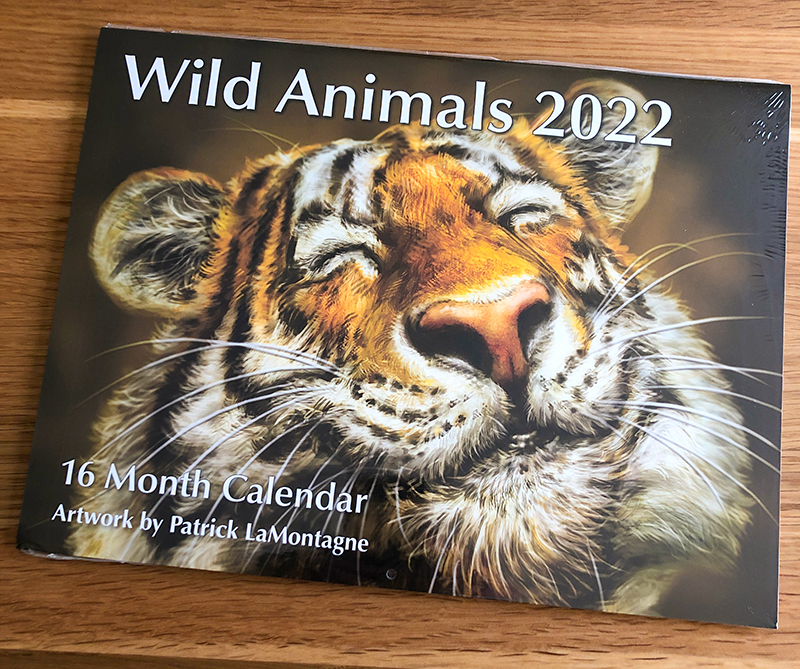 However, the other day, I knew they had received their first shipment of my Wild Animals 2022 calendar, and I wanted to see it. Even though I selected the images, approved the digital proofs, and knew what it would look like, there’s just something about holding the finished product.
However, the other day, I knew they had received their first shipment of my Wild Animals 2022 calendar, and I wanted to see it. Even though I selected the images, approved the digital proofs, and knew what it would look like, there’s just something about holding the finished product.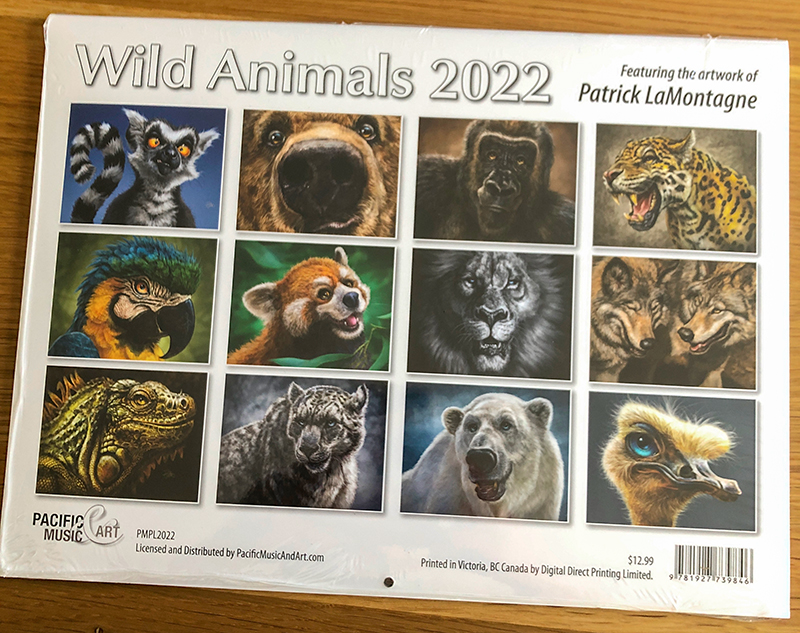 Each year, more of my work ends up on licensed products, many of which were a surprise. T-shirts from
Each year, more of my work ends up on licensed products, many of which were a surprise. T-shirts from  Mike sent me a picture of this display last week from the Save-On store in Duncan, BC, featuring artists from the Pacific catalogue. I’m told I’ll be able to share an even better display photo very soon from the Save-On here in Canmore.
Mike sent me a picture of this display last week from the Save-On store in Duncan, BC, featuring artists from the Pacific catalogue. I’m told I’ll be able to share an even better display photo very soon from the Save-On here in Canmore.